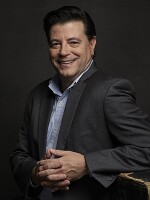The Greater Hartford art scene is thriving in many ways, but challenges persist. That's the conclusion of a new comprehensive report.
The Greater Hartford Arts Landscape Study was commissioned by the Hartford Foundation for Public Giving and the Connecticut Office of the Arts. Judith Rozie-Battle, Senior Vice President for the Foundation said for years her organization only had a piecemeal impression of what was really going on in the arts.
“We were looking for a baseline so that not only for us as a funder, but for other funders to really understand the landscape of what was out there, what the real concerns were,” said Rozie-Battle, “I think the study helped to bring some of that to light for us.”
The study is thorough. It takes into account the number of artists in the region, their discipline and their average salary. It also looks at arts organizations and how they are funded and whether these organizations are serving the diverse communities of Greater Hartford, what's called in the report "cultural equity."
“There's a lot of good work being done,” said Liz Shapiro the Director of Arts, Preservation and Museums for the state Department of Economic and Community Development. “We have a healthy community of artists, we have a robust community of arts organizations and cultural entrepreneurs working.”
The study concludes that the Greater Hartford arts ecosystem is more vibrant and dense than that of other major cities like Chicago and Philadelphia. The region also brings in audiences at a higher rate than the national average. But the study also found some concerning weak spots in this ecosystem.
“Even though there's a number of arts organizations here, people of color are not proportionately represented, and it's particularly true for Latinx artists and organizations,” said Judith Rozie-Battle. “One of the areas where there is some disconnect is dance. Dance is very, very popular within the cultural communities, but yet that's an area where there is definitely not as much growth and not as much opportunity.”
“Well, I think dance is small, but I hate to hear that it's shrinking,” said Hartford- based choreographer Judy Dworin. For 30 years the Judy Dworin Performance Project has highlighted social issues through dance performances. She says unlike a theater or a museum, there is no central performance space in Hartford dedicated exclusively to dance, which she says hurts the art form.
“I think from the perspective of where we are and where we work, it's alive and well and thriving. But I think overall there may be a perception that dance is not a visible art form in the same way that the other art forms are,” said Dworin.

Not surprisingly, the report found arts funding to be an issue. One third of Greater Hartford's arts organizations show signs of what’s called “financial frailty” in the study. This is especially true for the smaller community and neighborhood arts organizations. One factor is the lack of big money individual arts supporters in the region. The study also found that the growth rate of arts funding in the region lagged way behind the national average. According to the report, arts funding grew 12% in the Greater Hartford region between 2012 and 2016. The national average is 29% growth. That leaves arts organizations fighting for an ever shrinking slice of the funding pie.
“It's tough,” said Judy Dworin, “there are a limited number of grants, and so if everyone is vying for those grants only some people are going to get them. And the people that don't are going to have to figure out some other way.”
The DECD’s Liz Shapiro says figuring out that other way can be detrimental to a struggling arts organization.
“Spending so much time every day working to just survive, that they don't even have time to get together and come to the table to try and spend some time planning and thinking about what is needed to create a healthy environment,” said Shapiro.
In fact, the study says competing for funds has caused rifts and competition between arts organizations. Judith Rozie-Battle thinks a better way would be for them to enter into partnerships and consolidate their efforts, especially smaller arts organizations.
“Space is one way, but administrative back office functions, that would help them I think to save some money and to be able to provide themselves with some extra dollars for space.”
The report was released late last month. Liz Shapiro says one of the first takeaways for her was that arts administrators need more training.
“They need real training on just how to run the kinds of no-profits that they run. They need training in best practices, they need training in fundraising and fund development.”
Shapiro says she excited - the DECD’s Office of the Arts and the Hartford Foundation will meet for the first time next week to talk about the report and brainstorm ways to fix what's ailing the arts ecosystem of Greater Hartford.





